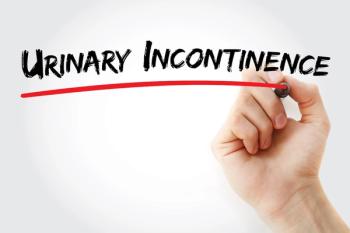
HIV Comorbidities Associated With More Hospitalizations, Increased Costs
As people living with HIV now have a normal life expectancy, thanks to antiretroviral therapy, the burden of comorbidities is on the rise, and more than half of deaths in the patient population are attributable to these comorbidities.
While antiretroviral therapy has transformed the prognosis of HIV, mortality rates among those living with the virus are still 3 to 15 times higher than the general population, likely attributable to the prevalence of noninfectious comorbidities. As people living with HIV now have a normal life expectancy, the burden of comorbidities is on the rise, and more than half of deaths in the patient population are attributable to these comorbidities.
In addition to contributing to higher mortality rates among the patient population, comorbidities in people living with HIV are also associated with increased hospital utilization and, subsequently, higher costs, according to a new study of patients in the Abruzzo region of Italy.
“Comorbidities complicate caring infrastructures for HIV-infected patients, because patients with multiple diseases and on complex pharmacological treatments are particularly difficult to manage, both in chronic and acute phases,” wrote the researchers. They noted that people living with HIV may have a higher prevalence of comorbidities at a younger age, potentially a result of the HIV infection itself, antiretroviral toxicity, or coinfections, such as hepatitis C.
The study included 1026 patients with HIV aged 18 and older, identified from data in the Abruzzo hospital discharge database from 2004 until 2013. Participants were followed up until December 2015.
Of the participants, 23% had hepatitis C coinfection and 30% had at least 1 comorbidity. Among those with a comorbidity, 28.5% had cardiovascular disease, 22% had cancer, 19.7% had diabetes, 19.7% had liver disease, 18.7% had chronic pulmonary disease, and 10.5% had renal disease.
During follow-up, 12.3% of those without a comorbidity were hospitalized, while 25.2% of those with 1 comorbidity and 31.7% of those with 2 or more comorbidities were hospitalized. The risk of acute hospitalization significantly increased with hepatitis C coinfection, as well as renal, liver, and chronic pulmonary comorbidities.
When calculating annual costs associated with hospitalizations, researchers observed that costs totaled €2,494 for participants without comorbidities. Meanwhile, costs amounted to €4422 (approximately $5148) for participants with 1 comorbidity. Coming in at nearly 4 times the amount of those with no comorbidities, hospitalization costs for those with 2 or more comorbidities totaled €9734 (approximately $11,332).
“Our evidence highlights the substantially increased risk of hospitalizations among HIV patients with 1 or more comorbidities and their subsequent relevant economic impact,” wrote the authors.
They concluded that clinicians and policy makers should be aware of the clinical and economic implications of comorbidities among people living with HIV as they “may well drive decision making on how to allocate scarce healthcare resources on the most effective interventions for the prevention and treatment of noninfectious comorbidities.”
Reference:
Cammarota S, Citarella A, Manzoli L, et al. Impact of comorbidity on the risk and cost of hospitalization in HIV-infected patients: real world data from Abruzzo region [published online July 23, 2018]. Clinicoecon Outcomes Res. doi: https://doi.org/10.2147/CEOR.S162625.
Newsletter
Stay ahead of policy, cost, and value—subscribe to AJMC for expert insights at the intersection of clinical care and health economics.





























































